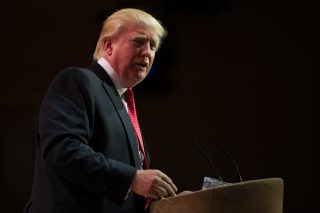 Phil Houston is CEO of QVerity, a training and consulting company specializing in detecting deception by employing a model he developed while at the Central Intelligence Agency. He has conducted thousands of interviews and interrogations for the CIA and other federal agencies. His colleague Don Tennant contributed to this report.
Phil Houston is CEO of QVerity, a training and consulting company specializing in detecting deception by employing a model he developed while at the Central Intelligence Agency. He has conducted thousands of interviews and interrogations for the CIA and other federal agencies. His colleague Don Tennant contributed to this report.
In the wake of Donald Trump’s stunning victory over Hillary Clinton to become President-elect of the United States, pundits have been scratching their heads, wondering how in the world the pollsters could have gotten it so wrong. As the various theories have been dissected and analyzed by the media, there’s one key factor that no one appears to be considering: The pollsters clearly lack essential skills in detecting deception.
That so many people were caught off-guard as the election results were tallied, and Secretary Clinton’s path to victory narrowed more and more, is largely attributable to the fact that for months, polls consistently showed Secretary Clinton with a comfortable lead. In the final average of polls tracked by RealClearPolitics, Clinton led 45.5% to Trump’s 42.2%. Explanations for the glaring discrepancy between those stats and the outcome of the election include the notion that there was a gross underestimation of the number of Trump voters who were never polled. While that was indeed likely a factor, what is far more informative is an examination of the demographics to determine which groups of voters skewed the results the most. The consensus appears to be, for example, that Mr. Trump did far better among college-educated voters, and among women in general, than the polls had indicated would be the case.
To what, then, should we attribute the faulty data? A USA Today report on Wednesday provided a clue when it quoted Arie Kapteyn, director of the University of Southern California’s Dornsife Center for Economic and Social Research, who indicated that some voters were reluctant to admit that they planned to vote for Trump. “There’s some suggestion that Clinton supporters are more likely to say they’re a Clinton supporter,” Kapteyn said, “than Trump supporters are to say they’re a Trump supporter.”
It should surprise no one that there might have been a large number of individuals in certain demographics who would be inclined to lie to a pollster about their intention to vote for Mr. Trump. Certainly, that the media has portrayed Mr. Trump’s supporters as a bastion of non-college-educated white males is ample incentive for many college-educated men and women, and women in general, to withhold the truth about their support for Mr. Trump. The simple truth is, people lie to pollsters, perhaps far more frequently than the general public might realize.
Polling organizations need to recognize and address the critical importance of factoring likely deception into the results they release to the public. Pollsters should be trained to recognize behaviors, exhibited by individuals in response to the pollsters’ questions, that have proven to be indicative of deception. With that additional tool at their disposal, they would be much better equipped to get it right next time.
This is an opinion piece. The views expressed in this article are those of just the author.
[Image via: Christopher Halloran/Shutterstock]
This is an opinion piece. The views expressed in this article are those of just the author.